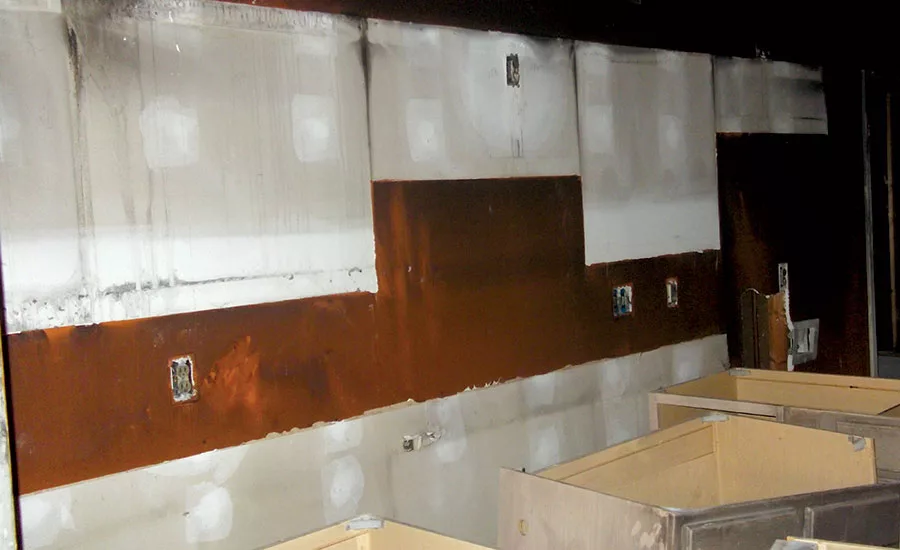Contents Corner: The Scoop on Cabinet Cleaning, Inside & Out

There are four clear steps to follow to effectively clean damaged cabinetry.

(Photos Courtesy of Annissa Coy) As with every contents job, it’s important to be thorough. Check out the soot and smoke damage behind these cabinets.
Cleaning cabinets after a fire usually means you will more than likely be dealing with a lot of grease and oils built up from cooking and use on top of smoke and soot. And if the fire happens to be a grease fire, you could be looking at quite the challenge.
Depending on the type and severity of the fire there are several steps and a few different processes you may want to use.
For example, if the exposure to smoke and soot was low and the cabinets were quite clean to begin with, then you might use this simple process:
1. HEPA Vacuum all surfaces inside and out of cabinetry.
2. Wipe all surfaces inside and out with a mild degreaser cleaning solution that has a deodorizer like 909 added to it.
3. Rinse all surfaces with hot, clean water.
4. Setup a hydroxyl unit and let it run in the room where the cabinets are for 24 hours. (open all cabinet doors for this step)
Using a deodorizing process like Hydroxyl after the cabinetry is cleaned will not only ensure the cabinets themselves will not have any residual odor, but it will help ensure there will be no odor that could come from small cracks up against the wall where the cabinets are hanging. If smoke and soot is lodged in these unreachable places, you may have an odor issue down the road.
As a side note you may want to consider sealing these cracks, if necessary, with caulking as well.
So let’s break the cleaning process down step by step for cabinets that are pretty dingy from daily use and cooking and now they are covered in smoke and soot.
First off you will need a few things like a good degreaser, wood cream, 909, a good HEPA vacuum, hydroxyl machine, and microfiber cloths.
The first thing you will want to do is use a HEPA vacuum to remove all loose dirt and soot from the exterior and interior of the cabinets.
Next, mix up your cleaning solution in very hot water and scrub the cabinets. Also you can mix 2 to 6 ounces of 909 into your cleaning solutions and deodorize while cleaning. Just remember: more is not always better when it comes to 909, so don’t go overboard.
I usually clean the inside of the cabinets first as it tends to be less affected. If you start with the exterior of the cabinets you may not want to use that same microfiber cloth on the inside of the cabinets as it will more than likely be very dirty and could transfer soot stains to this area.
Looking for a reprint of this article?
From high-res PDFs to custom plaques, order your copy today!









